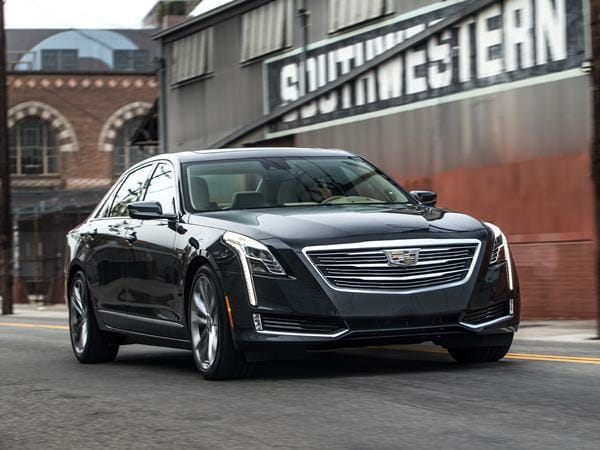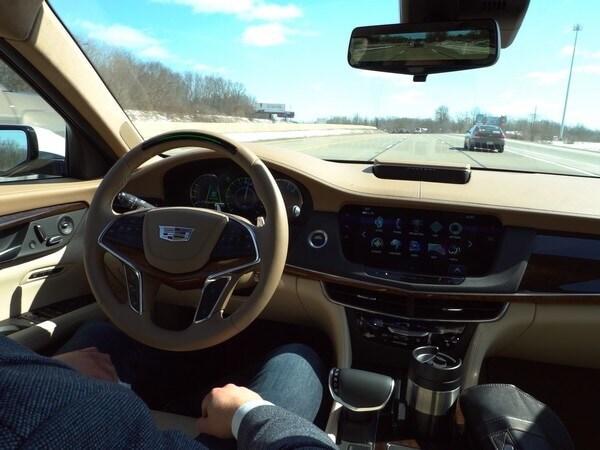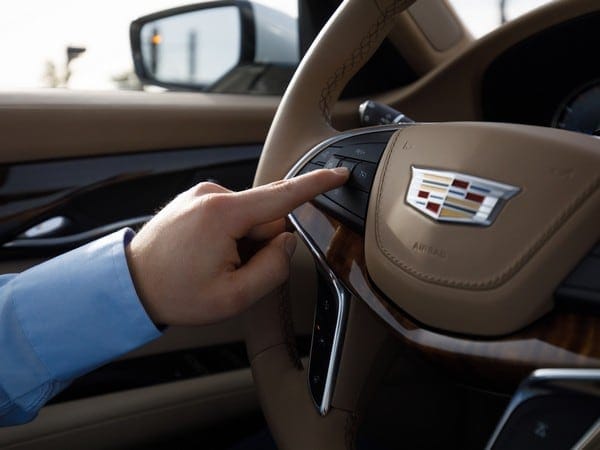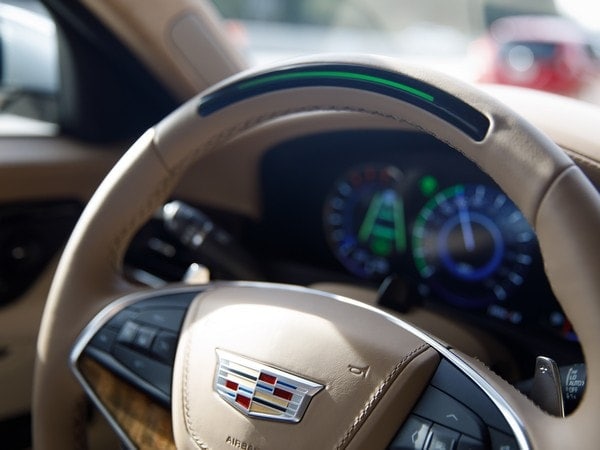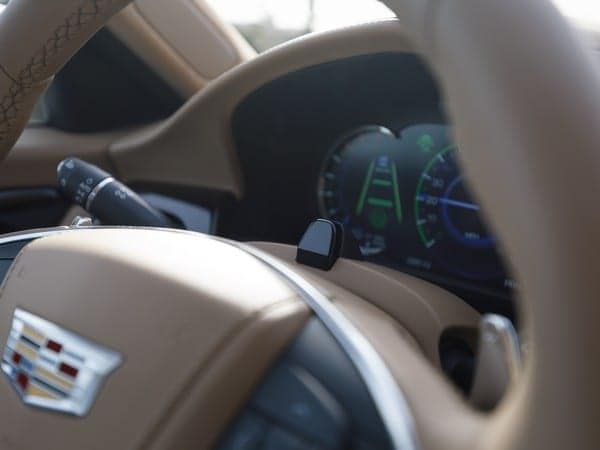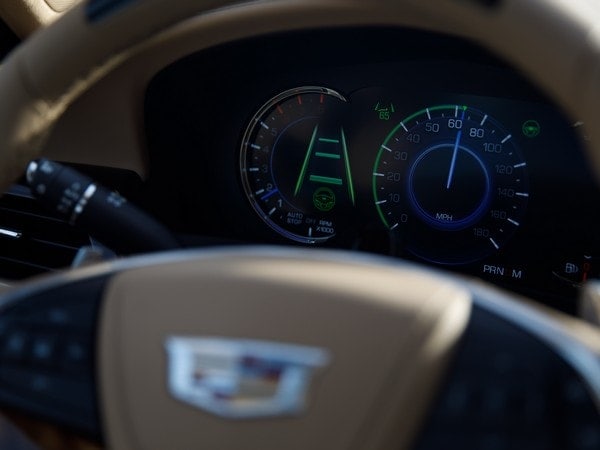Cadillac Super Cruise is another significant step toward cars driving themselves. It uses technology that’s becoming increasingly common in new cars, especially luxury marques. Things like adaptive cruise control with automatic emergency braking, blind spot monitoring, electrically assisted steering that can be set in motion by onboard computers, plus cameras and sensors.
It also uses LIDaR, which isn’t another name for a polygraph machine, but stands for light detection and ranging. It’s similar to radar, only based on light instead of radio waves. Super Cruise employs all these elements so drivers can take their hands and feet from the controls while on freeways.
Limited to CT6 models
So far, this technology is only available in the CT6, Cadillac’s large flagship sedan. To give it a true workout, Cadillac took a convoy of Super Cruise-equipped models on a continent-crossing zig-zag from New York to Los Angeles, by way of Memphis, Chicago, Dallas and Phoenix. Kelley Blue Book participated on the final leg, a stretch of around 850 miles. There were no big problems, just a few glitches.
Even if a driver is on a particular stretch of freeway for the first time, the car’s “brain” is already familiar with it. Cadillac and its tech partners have driven every mile of interstate in North America, collecting data and storing information. When an onboard camera reads the lane markings and checks in with the GPS navigation (which is accurate to around 6.5 feet in this application; a vehicle moving at 60 mph covers 88 feet per second), the car knows where it is and what’s coming up. All it takes is to watch for a symbol to light up in the instrument cluster, press the corresponding button on the steering wheel and let go.
It’s scary doing that for the first time, especially at 65 mph. But the car gives plenty of indication that it’s in control. The top arc of the steering wheel houses a strip of LEDs. Green means everything is operational, blue signals a standby mode, and red indicates that the driver must take immediate action. Colorblind drivers will be pleased to know that each color pulses at different rates, while there are also audible warnings and a haptic alert that vibrates the seat.
Lane keeping only
The steering wheel symbol will only illuminate when the car is in the center of the lane. Changing lanes must be done by the driver, which sends the system into standby. Once everything is centered, then a steady green light comes on, and there’s a perceptible engagement to the steering. Cruising speed can be adjusted with plus/minus buttons on the steering wheel.
What might be scarier is how quickly and easily this all becomes incorporated into one’s driving habits. After the initial “well, fancy that” reaction, it doesn’t take much time to develop a trust in the system, drop the shoulders, and relax the hands and feet instead of keeping them hovering an inch above the wheel and pedals.
It’s this aspect that makes Super Cruise worth considering. After a long day’s drive or a tough commute, a driver will have expended less energy, both mental and physical. It’s a $5,000 option bundle on the Premium Luxury trim (which starts at $71,290) that also includes the excellent Active Chassis, night vision and 20-inch alloy wheels. This package is standard in the Platinum trim (starting at $85,290). And the necessary OnStar subscription is free for three years.
The competition
Other manufacturers have their own systems, including some that function in cities. Volvo’s Pilot Assist, for example, or the “Distronic Plus with Steering Assist and Stop&Go Pilot” from Mercedes-Benz. But while these are ever-attentive virtual co-drivers, they still demand a human hand on the wheel for anything more than a few seconds. Even Tesla’s Autopilot function has been programmed to behave that way. With Super Cruise, it could theoretically remain active until the end of the freeway.
Apart from only being accessible on one kind of road, the other downside of Super Cruise is that it still requires a level of involvement. A camera in the instrument cluster keeps watch. If a driver appears to be looking somewhere other than the road, the system will demand attention.
So it isn’t possible to engage Super Cruise and then pick up a smartphone, answer some emails, write a few texts, or maybe get on with some knitting. Ignore the red lights and warnings, and the system will lock itself out and can only be accessed again once the car has come to a stop and then restarted. No doubt this is a safeguard provision, since the legal ramifications of automotive autonomy are somewhat fuzzy. In the event of an accident, the driver is still responsible for being in charge of the vehicle.
Also: Get your first look at the new and redesigned cars of 2018
Level “2.5” technology
On the scale developed by the Society of Automotive Engineers (SAE), Cadillac describes Super Cruise as Level 2 (SAE defines it as partial automation of steering and acceleration/deceleration, using information about the environment and with the expectation that a human performs all other aspects of driving). But works almost like a Level 3 (conditional automation: mode-specific performance of all aspects of the dynamic driving task, with the expectation that the human driver will respond appropriately to a request to intervene). With a little pressing, a Cadillac engineer might be happy with a description of “Level 2.5.”
This modesty is deliberate. Mercedes-Benz is similarly coy with its new Drive Pilot feature in the S-Class (which still requires input every 10 seconds, such as touching the steering wheel). The German company has set its system to do slightly less than it’s truly capable of, so the driver remains alert and involved.
These developments, however, spark the notion that everything required to relinquish all human control is a reality and all it would take is an established set of regulations for car manufacturers to plug in a few connections, update some software and full autonomy here we come. That would be Level 5, by the way.
Version 1.0 feel
But back to the brave new present. Cadillac Super Cruise is the first hands-free technology for freeway driving available to the driving public. Consequently, there’s a Version 1.0 feel. For example, the system will steer the car whenever the road goes into a curve. But it won’t do so in one smooth, continuous sweep.
It will turn, follow a straight line for a short time, then turn again, straighten, turn, then straighten once the curve is passed. When this occurs at the upper end of permissible freeway speeds, there may be times when it’s impossible to fight a reflexive grabbing of the wheel. If a curve is deemed too tight, Super Cruise will slow down a touch for the greater comfort of the occupants, which is good. But this a calibration issue.
Incidentally, if a driver cannot react for any reason (a medical crisis, perhaps) Super Cruise will activate the hazard flashers and slowly bring the car to a stop in the lane, then alert the emergency services through OnStar.
As Cadillac continues to hone Super Cruise, maps can be updated over the air. And any revisions to things like steering calibration are expected to be upgraded when the car goes in for servicing.
Glitches in the system
During the course of our test drive, we found the system could get confused by low, bright, late-afternoon sunlight. There were occasions when Super Cruise was not available, or it would drop out for no apparent reason. And sometimes it worked in stop-go traffic, other times it didn’t. At one point, when there were no painted lane markings, only Botts dots, the system was unavailable. So we entered the carpool lane—where there were painted lines on either side—and everything was back on track.
Admittedly, some of this may be down to operator error, where greater familiarity would negate the issue, but that still leaves a chunk of work to be done by Cadillac. There’s one area, though, where the company can afford to feel pretty smug: the rest of the CT6.
During long stints, the heated/cooled/massaging front seats remain utterly comfortable. The cabin is spacious, hushed and classy. And the smooth ride quality is on a level with the car’s more expensive German rivals. If Super Cruise is a major factor in considering a CT6, the other talents will seal the deal.
